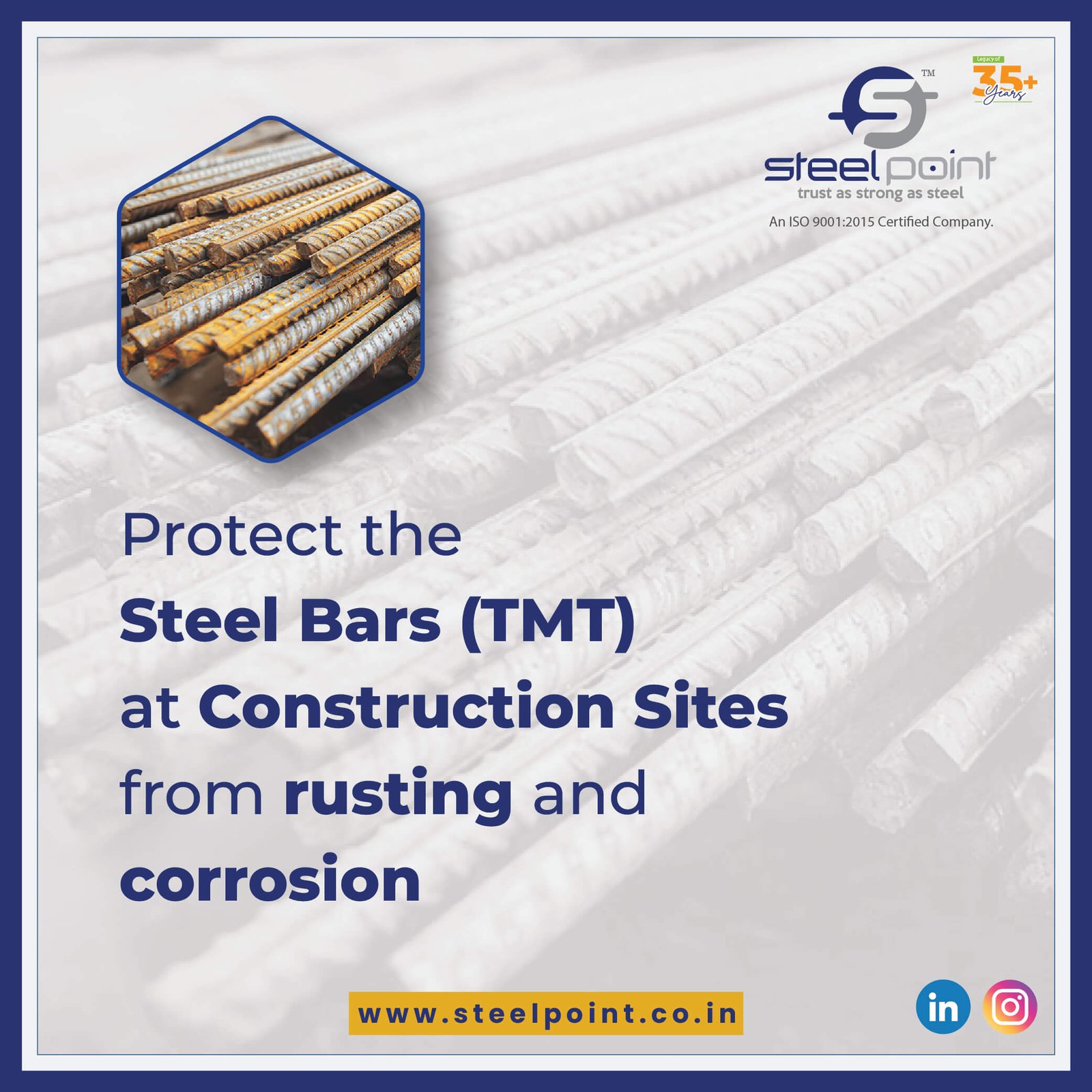
Protecting Reinforcement Steel Bars (TMT) at Construction Sites
Best Practices for Longevity and Strength
Reinforcement Steel Bars, or TMT Bars, are critical components in any concrete structure, providing the tensile strength needed to withstand loads and prevent cracking. However, their effectiveness can be severely compromised if they are not properly protected from environmental exposure. Rusting and corrosion can lead to following situations
- Reduced bonding with concrete
- Structural weaknesses
- Increased maintenance costs.
To ensure durability and performance, construction teams must adopt preventive measures right from the moment Reinforcement Steel Bars arrive on site.
Proper storage:
Proper storage is one of the most essential practices to keep TMT Bars rust & corrosion free. Upon delivery, they should be stored in a dry, elevated, and covered area, away from direct contact with moisture, rain, or soil contaminants. Elevating the Reinforcement Steel Bars at least 300 mm (or one foot) above the ground using wooden or metal platforms helps to prevent rust caused by ground moisture. Additionally, Reinforcement Steel Bars should be covered with waterproof materials like tarpaulin sheets when not in use. However, it’s important to ensure that there’s adequate airflow underneath the covers to avoid the buildup of trapped moisture, which can also lead to rusting.
Applying a cement slurry:
In cases where Reinforcement Steel Bars need an additional protective layer before installation, applying a cement slurry is a commonly used technique. The Reinforcement Steel Bars must first be cleaned thoroughly to remove any rust, dust, or contaminants. A slurry made by mixing cement and water in a 1:3 ratio is then applied evenly over the surface using a brush or spray. Once applied, the slurry should be allowed to cure for at least 24 hours to form a hardened, protective film. A post-curing inspection ensures that all surfaces are uniformly coated and ready for use.
Regular inspection:
Regular inspection of Reinforcement Steel Bars is crucial to assess the extent of rusting or corrosion. A visual inspection can help detect different levels of rust—light rust typically appears as a slight discoloration, moderate rust shows signs of surface flaking, while severe rust involves deep corrosion and steel thinning. Light rust can often be removed with a wire brush.
Common form of deterioration is scaling, which results from environmental exposure such as high humidity or salt-laden air. It appears as a flaky, powdery layer on the surface of the TMT Bars and may cause cracking or delamination. If scaling has compromised the steel beneath, replacement or professional treatment is recommended before use.
To maintain quality control on site, a thorough checklist should be followed during the inspection of TMT Bars. This includes checking for visual signs of rust, scaling, and pitting, testing for material loss, confirming that protective coverings are intact, and ensuring proper airflow around stored Reinforcement Steel Bars (TMT).
In conclusion, protecting TMT Bars from corrosion and environmental damage is essential for the success and safety of any construction project. By implementing these best practices—ranging from proper storage and covering to the use of protective coatings and regular inspections—we can extend the lifespan of their structures and avoid expensive repairs in the future.